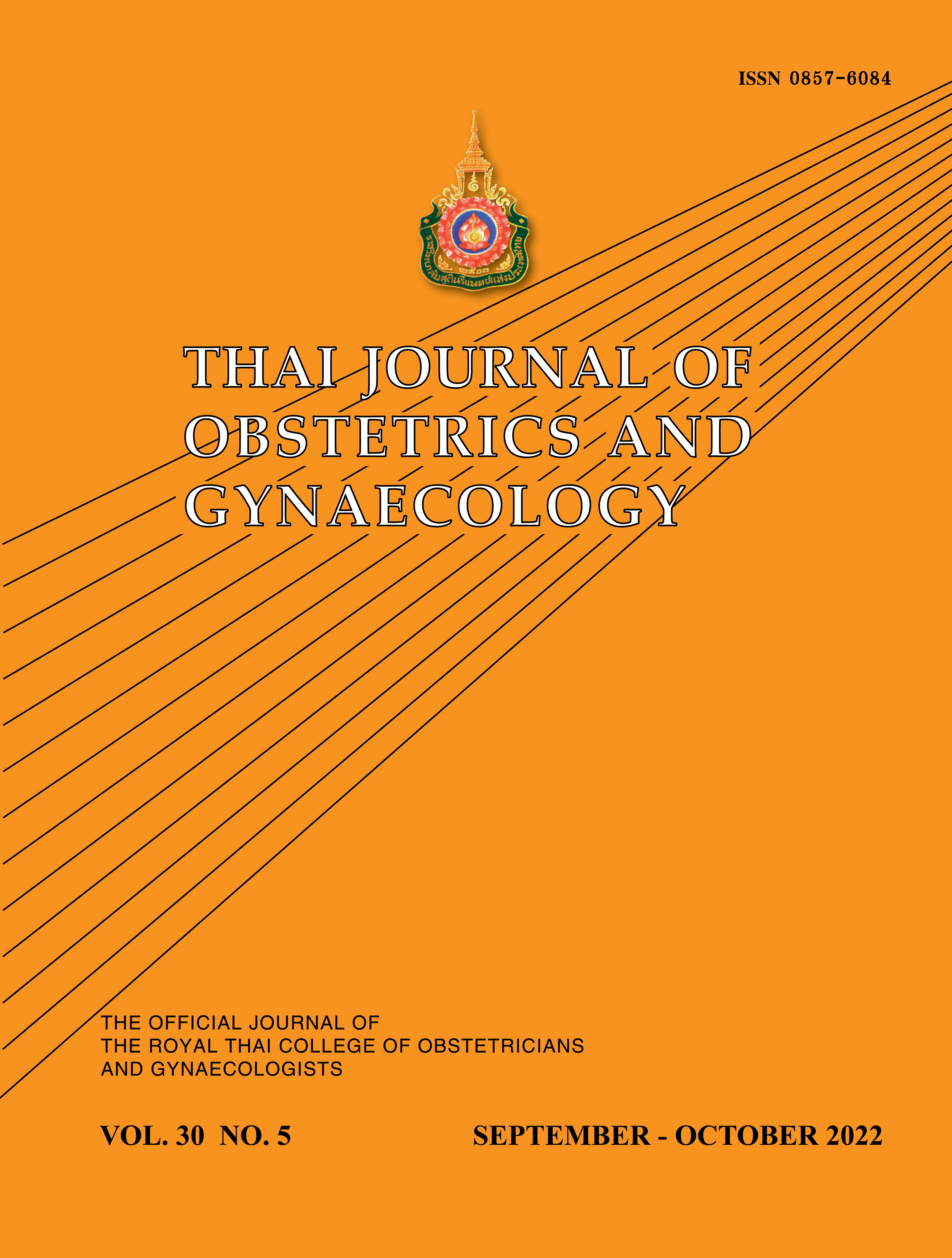Reliability of the Cervamet and POPstix in Pelvic Organ Prolapse Quantification Measurement
Main Article Content
Abstract
Objectives: The primary objective was to evaluate the reliability of Cervamet and POPstix in pelvic organ prolapse quantification (POP-Q) measurement by 2 different groups of experienced physicians. The secondary objectives were to study time used for examination and patients’ discomfort scores.
Materials and Methods: 156 Thai pelvic organ prolapse women attending a gynecology clinic at King Chulalongkorn Memorial Hospital from October 2019 to July 2020 participated in the study. The participants who underwent POP-Q measurement were divided into 4 groups: group1: two staffs using Cervamet, group 2: two staffs using POPstix, group 3: two residents using Cervamet, and group 4: two residents using POPstix. The results were blinded to one another. The time used for examination and the patients’ discomfort score were recorded.
Results: The reliabilities (intraclass correlation coefficient) were good in both resident groups: POPstix (0.75-0.98) and Cervamet (0.76-0.98) and in the staffs group: POPstix (0.75-0.95) and Cervamet (0.78-0.96). The median of the time used by the resident group was higher than in the staff group (POPstix: 1.71 vs 1.45 minutes, Cervamet: 3.04 vs 1.99 minutes) (p < 0.01). There was no statistical difference in the patients’ discomfort scores in all groups.
Conclusion: The Cervamet was a non-disposable tool which equivalent reliability when compared to the POPstix that could be considered as an alternative for POP-Q measurement.
Article Details

This work is licensed under a Creative Commons Attribution-NonCommercial-NoDerivatives 4.0 International License.
References
Boyd SS, O’Sullivan D, Tulikangas P Use of the Pelvic Organ Quantification System (POP-Q) in published articles of peer-reviewed journals. Int Urogynecol J 2017;28:1719-23.
Haylen BT, de Ridder D, Freeman RM, Swift SE, Berghmans B, Lee J, et al. An International Urogynecological Association (IUGA)/International Continence Society (ICS) joint report on the terminology for female pelvic floor dysfunction. Int Urogynecol J 2010;21:5-26.
Hall AF, Theofrastous JP, Cundiff GW, Harris RL, Hamilton LF, Swift SE, et al. Interobserver and intraobserver reliability of the proposed International Continence Society, Society of Gynecologic Surgeons, and American Urogynecologic Society pelvic organ prolapse classification system. Am J Obstet Gynecol 1996;175:1467-70.
Muir TW, Stepp KJ, Barber MD Adoption of the pelvic organ prolapse quantification system in peer-reviewed literature. Am J Obstet Gynecol 2003;189:1632-5.
Hayward L, Wong V, Tomlinson L, Smalldridge J. A prospective interobserver study using the POPstix device, a measuring tool to simplify POPQ measurement. ICS 2009 San Francisco. (Abstract).
Thiagamoorthy G, Zacchè M, Cardozo L, Naidu M, Giarenis I, Flint R, et al. Digital assessment and quantification of pelvic organ prolapse (DPOP-Q): a randomised cross-over diagnostic agreement trial. Int Urogynecol J 2016;27:433-7.
Bump RC, Mattiasson A, Bø K, Brubaker LP, DeLancey JO, Klarskov P, et al. The standardization of terminology of female pelvic organ prolapse and pelvic floor dysfunction. Am J Obstet Gynecol 1996;175:10-7.
Walter SD, Eliasziw M, Donner A Sample size and optimal designs for reliability studies. Stat Med 1998;17:101-10.
Koo TK, Li MY A Guideline of Selecting and Reporting Intraclass Correlation Coefficients for Reliability Research. J Chiropr Med 2016;15:155-63.


